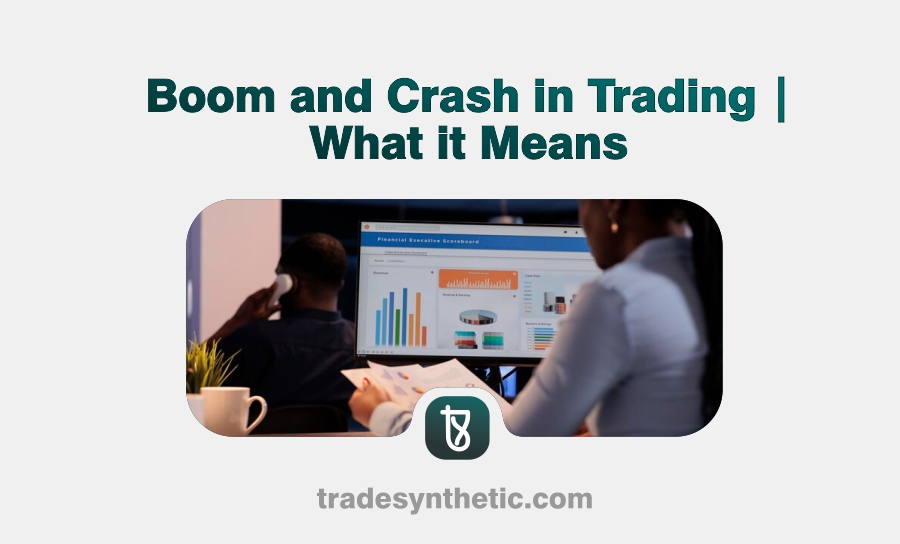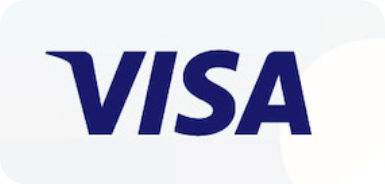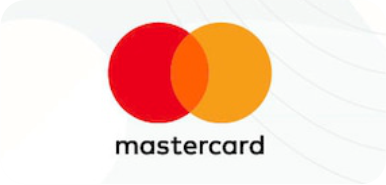Among the diverse options in financial markets for individuals looking to grow their wealth, Boom and Crash in Trading indices stand out. If you’ve ever wondered what Boom and Crash trading means, or considering entry into this Niche, you’re in the right place.
This article thoroughly explores this trading phenomenon, covering major aspects such as trading strategies, risk management, and how to make the most of this market.
What Are Boom and Crash Indices?
Boom and Crash indices are synthetic indices offered on trading platforms like Deriv. These indices simulate market movements, with Boom indices characterized by sudden upward spikes and Crash indices marked by sharp downward drops. “Boom and Crash in trading” describes these indices’ primary behavior which involves periods of calm followed by dramatic movements.
These indices operate 24/7, making them attractive to traders across various time zones. Unlike traditional forex trading, they are not influenced by global economic events. Instead, their movements are programmed based on algorithms, providing a unique trading experience.
For example, in the Boom index, you can experience a spike of 50 to 100 ticks upward, while in the Crash index, you might encounter a rapid drop in the same manner.
How Do Boom and Crash Indices Work?
Understanding how the Boom and Crash indices work is very important to trading them effectively. Each index—Boom 1000, Boom 500, Crash 1000, and Crash 500—has distinct characteristics which are:
Boom Indices
These are designed to trend downward with occasional upward spikes (booms). Traders often aim to “sell” in anticipation of a spike-free trend.
Crash Indices
These indices move upward steadily, punctuated by sharp downward crashes. Traders might “buy” expecting a smooth upward trend before the next crash.
Effective Strategies for Trading Boom and Crash Indices
To succeed in Boom and Crash trading, you need well-defined strategies. Here are some proven approaches:
- Identify Trends
Understand whether the market is trending upward, downward, or sideways. Use tools like moving averages or Bollinger Bands to determine trends.
- Leverage Risk Management
The volatility of Boom and Crash indices can lead to significant losses if not managed properly. Use a stop-loss strategy to cap your risks.
- Focus on Timing
Successful Boom and Crash traders pay attention to timing. Observe spike patterns and adapt your trades accordingly.
- Backtest Strategies
Test your trading strategies on a demo account before using real money. This practice helps you refine your approach without financial risks.
- Use Technical Analysis
Indicators like Relative Strength Index (RSI), Moving Average Convergence Divergence (MACD), and support and resistance levels are invaluable in analyzing these indices.
Managing Risks in Boom and Crash Trading
Volatility in Boom and Crash indices is a double-edged sword. While it offers profit potential, it also increases risk. Here’s how you can mitigate these risks:
- Use Stop Loss and Take Profit
Set a stop loss to minimize your losses and a take profit to lock in gains. These tools ensure you don’t lose more than you can afford.
- Position Sizing
Never risk more than 1-2% of your trading capital on a single trade. This ensures you can survive multiple losses.
- Avoid Overtrading
Emotional trading can lead to significant losses. Stick to your trading plan and avoid revenge trading after a loss.
- Leverage Properly
While leverage amplifies profits, it also magnifies losses. Use it wisely, especially in volatile markets like Boom and Crash.
Benefits of Trading Boom and Crash Indices
Boom and Crash indices offer several advantages, making them appealing to traders:
1. High Volatility
The most noticeable advantage of trading Boom and Crash indices is their high volatility. Their rapid price movements, especially the sudden spikes in the Boom or Crash indices, create opportunities to make quick profits within short trading sessions.
For instance, a well-timed trade during a Boom spike could yield significant gains, making these indices ideal for traders who thrive on fast-paced markets
2. 24/7 Availability
Unlike forex pairs or stock markets that are limited by trading hours, Boom and Crash indices are available 24/7. This flexibility is a huge benefit, as you can trade anytime—whether it’s early morning or late at night—depending on your schedule.
This around-the-clock availability ensures that traders in different time zones can participate without worrying about market closures.
3. Algorithmic Price Movements
One unique aspect of Boom and Crash indices is that their price movements are algorithm driven. This means that while no market is entirely predictable, Boom and Crash indices tend to follow patterns that can be identified and analyzed using technical tools.
For instance, experienced traders often observe specific time intervals for spikes in these indices, making them easier to anticipate with proper analysis.
4. No External Influences
Boom and Crash indices are synthetic and do not depend on real-world economic or geopolitical factors. This means events like elections, wars, or natural disasters don’t impact these indices.
As a result, you don’t have to worry about sudden market shocks caused by news events. Your success largely depends on understanding patterns and market behavior, making this market more stable for technical traders.
Conclusion
Trading Boom and Crash indices will only yield greater results if it is approached with knowledge and discipline. However, their volatility requires traders to be cautious and implement sound risk management strategies. For whichever trading style you’re making use of, success in Boom and Crash trading hinges on your ability to plan, analyze, and adapt.
In summary, understanding Boom and Crash in trading is about grasping their volatility and leveraging it to your advantage. With the right mindset and tools, you can scale through this wonderful trading avenue and achieve consistent results.
Frequently Asked Questions (FAQs)
What are Boom and Crash indices?
- Boom and Crash indices are synthetic markets characterized by frequent spikes (Boom) or crashes (Crash) in price.
Can I trade Boom and Crash indices without experience?
- While possible, it’s not advisable. Start with a demo account to practice strategies before trading with real money.
What is the best strategy for Boom and Crash trading?
- Trend-following and scalping are effective strategies. Your choice depends on your trading style and risk tolerance.
How much capital do I need to start trading Boom and Crash indices?
- You can start with as little as $10, but a larger capital allows for better risk management.
Are Boom and Crash indices affected by news events?
- No, they are synthetic indices, meaning their movements are based on algorithms, not real-world events.










